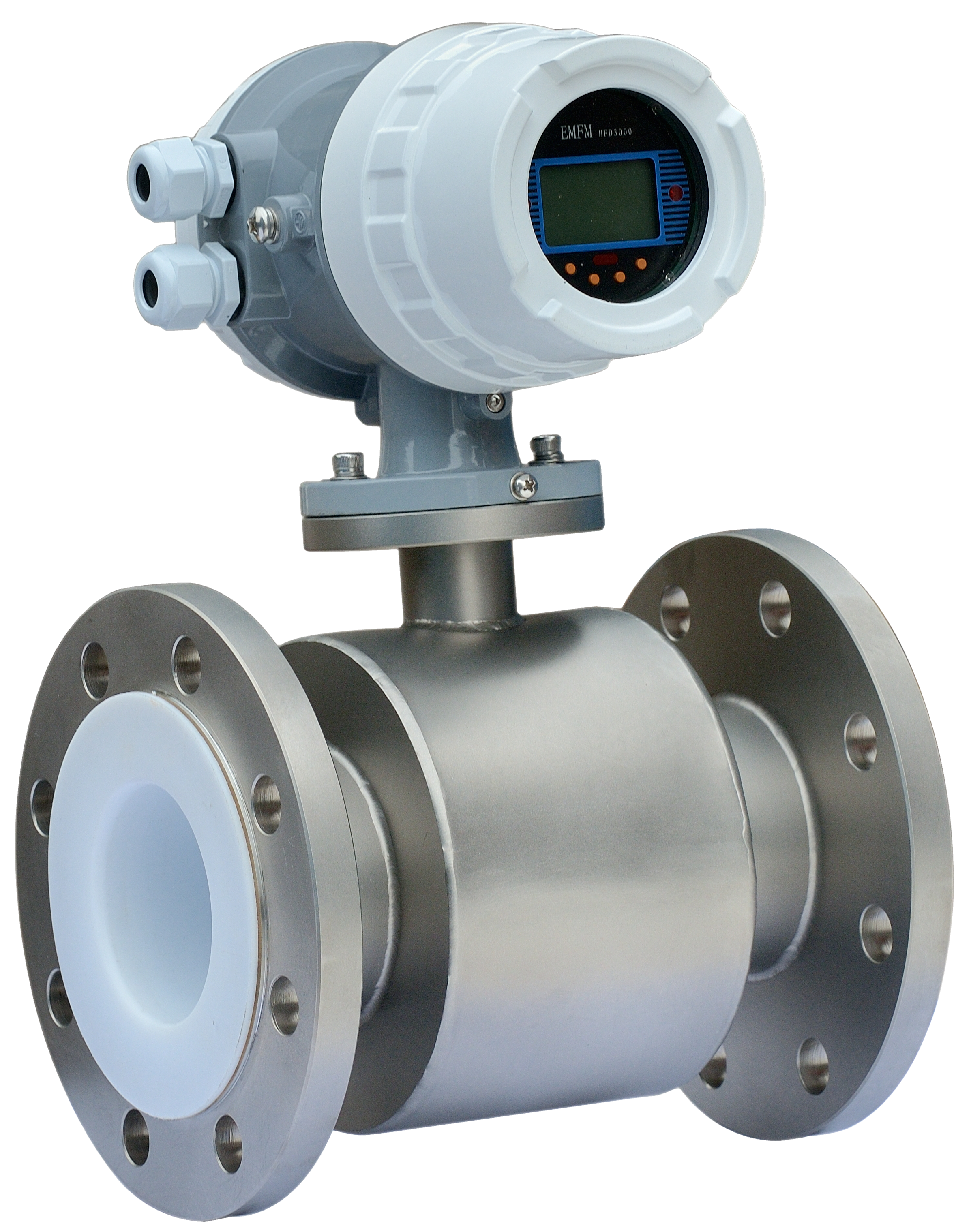The main components of the stainless steel electromagnetic flowmeter sensor are: measuring tube, electrode, excitation coil, iron core and yoke shell. It is mainly used to measure the volume flow of conductive liquid and slurry in closed pipelines. Including acid, alkali, salt and other highly corrosive liquids. The product is widely used in petroleum, chemical, metallurgy, textile, food, pharmaceutical, paper and other industries, as well as environmental protection, municipal management, and water conservancy establishment and construction.The core of the electromagnetic flowmeter converter adopts a high-speed central processor. The contest argument is very fast, high in accuracy, and robust in measurement. The output impedance of the converter circuit is as high as 1015 ohms, the common mode restraint ratio is better than 100db, and the restraint ability against external disturbance and 60Hz/50Hz disturbance is better than 90db, which can measure the flow of fluid media with lower conductivity. The sensor adopts the non-average magnetic field technology and the extraordinary magnetic circuit mechanism, the magnetic field is stable and firm, and the volume is greatly reduced, the frequency is increased, and the flowmeter is small in size.The installation of stainless steel electromagnetic flowmeter should expect the following ten points:1. Choose the installation address and position of the intelligent electromagnetic flowmeter according to your needs, but the electrode axis must be roughly at the horizontal target;2. It is hoped that the purpose of the activity on the flow meter is not in line with the flow of the fluid;3. The measuring tube must be completely filled with the medium in all efforts. As long as the tube is full, the capacity can be accurately measured. For the partially filled tube, the installation method similar to that of the release valve should be adopted. Do not install it at a low point. Solid confluence, otherwise, in order to prevent the generation of vacuum, the sensor should be prevented from being installed at the inlet of the pump;4. When installing, ensure that there is sufficient space near the flange of the pipeline;5. The pipes on both sides of the flowmeter should be supported and firm, and should not be installed in the center that is violently touched;6. In order to facilitate installation, for large-size instruments with DN>200, telescopic tubes can be used to meet the axial displacement of the connecting flange;7. Measured from the electrode axis, the length of the shortest straight pipe upstream is 5DN, and the length of the shortest straight pipe upstream is 2DN (DN is the inner diameter of the pipe);8. For the split type intelligent electromagnetic flowmeter, the signal converter (and power amplifier) should be installed; even if it is close to the sensor, the tail line should be a shielded cable, preferably a double-layer shielded cable, and no Expose the signal converter (or power booster) directly to the sun, if required, a sunshade can be installed;9. For fluid vortex or spiral activities, lengthen the concave-convex straight pipe section and install an activity straightener;
10. In order to make the instrument sturdy, improve the measurement accuracy, and not be disturbed by the external parasitic potential, the sensor should have a good separate grounding wire, and the grounding resistance is less than 10Ω.

Post time: 21-09-21
